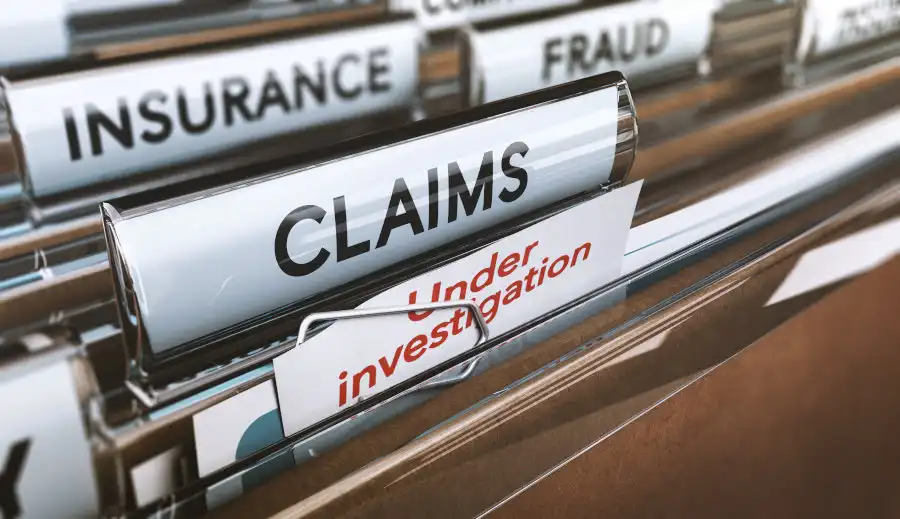Experienced Bay Area Criminal Defense Lawyer for White-Collar Charges
If you are under investigation or have been charged with fraud or embezzlement in California, immediate and strategic action is critical. At Ginny Walia Law Offices, serving the Bay Area including San Ramón, Walnut Creek, Pleasanton, Oakland, and San Francisco, we defend individuals facing serious white-collar crimes and theft offenses.
What Are "Fraud" and "Embezzlement" in California?
In California, embezzlement is specifically addressed under California Penal Code § 503 (PC 503), which defines it as:
"the fraudulent appropriation of property by a person to whom it has been entrusted."
Fraud, broadly speaking, can involve a variety of crimes (false representation, financial deception, forgery, identity theft, etc.), and may be charged under statutes beyond PC 503. Because these are often non-violent offenses committed in workplace or professional settings, they are classified as white-collar crimes.
Why the Difference Matters
- With embezzlement, the key factor is that the defendant was entrusted with property (money, assets, access) and then wrongfully used or converted it for their own benefit.
- With other forms of fraud, the trust relationship may be looser, but the deception or misrepresentation is central.
- Knowing whether the charge is embezzlement, theft, or a fraud-scheme makes a difference in how the case is handled and defended.
Elements of Embezzlement (PC 503)
To secure a conviction under PC 503, the prosecution must prove beyond a reasonable doubt each of the following elements:
- A property owner (or owner's agent) entrusted property to the defendant.
- The entrustment occurred because of a relationship of trust or confidence.
- The defendant fraudulently converted or used the property for their own benefit.
- At the time of conversion/use, the defendant intended to deprive the owner of its use (even if temporarily).
Important: A good-faith belief in the right to use the property may be a defense; conversely, intending to repay the property later does not automatically avoid liability.
Related Statutes Worth Knowing
- California Penal Code § 508 (PC 508) - Embezzlement by a clerk, agent or servant.
- California Penal Code § 504 - Embezzlement by public officers or corporate fiduciaries.
- California Penal Code § 487 - Grand theft (often used in conjunction with high-value embezzlement).
Under investigation for embezzlement or fraud? Don't wait—early legal intervention can protect your rights, preserve critical evidence, and may prevent formal charges from being filed.
Penalties & Consequences in California (2025)
The penalties for embezzlement depend primarily on the value of the property taken and whether the prosecutor charges the case as a misdemeanor or felony (a "wobbler" in California).
Petty Theft/Low-Value Embezzlement
- If the property value is $950 or less, the offense may be charged as petty theft under California Penal Code § 484.
- Possible penalty: up to 6 months in county jail, fines, restitution.
Grand Theft/High-Value Embezzlement
- If the value exceeds $950, or involves a vehicle or firearm, the offense is grand theft and may be charged as either a misdemeanor (county jail) or felony (state prison) under PC 487 when tied to embezzlement.
- Typical felony sentence: 16 months, 2 years or 3 years in prison.
- Sentencing enhancements apply for very large losses:
- +1 year for losses over $65,000
- +2 years for losses over $200,000
- +3 years for losses over $1.3 million
- +4 years for losses over $3.2 million
Other Consequences
- Restitution: The court will typically order repayment of the full amount taken.
- Fines: Fines can run into $10,000 or more, especially in felony cases.
- Collateral consequences: Loss of professional licenses, difficulty securing employment (especially in positions of trust or financial responsibility), immigration consequences (non-citizens may face deportation for crimes involving moral turpitude).
- Criminal history: A conviction stays on your record, which can impact housing, credit, business opportunities, and reputation.
Professional Impact: Because embezzlement implicates trust, integrity and financial responsibility, many employers and licensing boards view it very unfavorably. A conviction can lead to suspension or revocation of professional licenses and severely damage your career prospects in the Bay Area job market.
How the Legal Process Works — Bay Area Context
If you are facing fraud or embezzlement charges in the Bay Area (e.g., Alameda County, Contra Costa County, or nearby), here is how the process typically unfolds:
1. Investigation
You may be subject to internal company investigation, subpoena for records, or criminal investigation by law enforcement (District Attorney's office, or sometimes federal authorities).
2. Arrest or Charging Decision
The DA will decide whether to file charges — whether to treat the offense as a misdemeanor or felony will depend on the value, defendant's record, and nature of the trust relationship.
3. Initial Appearance / Bail / Arraignment
You will be brought before the court, hear the charges, and likely asked to enter a plea.
4. Discovery and Pre-Trial Negotiations
Your defense attorney will obtain evidence (company records, communications, auditing logs), file motions (e.g., for dismissal, reduction, plea deals), and engage with the prosecutor.
5. Trial or Plea
Most cases resolve via plea at some point. If not, a jury trial may be required.
6. Sentencing
If convicted (or plead guilty), the court will impose sentence including jail/prison time, fines, restitution, probation or formal felony probation, and may impose enhancements.
7. Post-Conviction Consequences
Including restitution payment, probation supervision, licensing impact, employment issues, and record management/expungement considerations.
Facing white-collar charges in the Bay Area? We understand the unique challenges of fraud and embezzlement cases—from complex financial records to professional licensing concerns. Let us build a strategic defense tailored to your situation.
Why You Need an Experienced Bay Area White-Collar Defense Lawyer
- These cases often involve complex financial records, forensic accounting, and business audits.
- The "entrustment" and "intent to deprive" elements create strong opportunities for defense—if we can show lack of intent, good-faith belief, or consent/authorization.
- Local DA offices in the Bay Area (Alameda, Contra Costa, San Francisco, Santa Clara) often target white-collar crimes aggressively—having a lawyer familiar with the local courts, prosecutors, and negotiation strategies matters.
- Early intervention may allow for negotiation before formal charges, possible diversion, or reduction of charges.
- Protecting your reputation, career, professional license, and immigration status requires strategic planning beyond just the criminal case.
Common Legal Defenses to Embezzlement and Fraud
A skilled criminal defense attorney can challenge embezzlement and fraud charges on multiple grounds. Some common defenses include:
- Claim of Right / Good-Faith Belief: You believed in good faith that you had the right to the property, did not conceal that you were taking it, and did not take it because the owner owed you a debt.
- Lack of Criminal Intent: California embezzlement charges require specific intent to deprive the owner of the property. If the prosecutor cannot demonstrate this element, you cannot be convicted.
- False Accusations: You may be falsely accused of the crime, or someone else may have actually stolen from the company.
- Insufficient Evidence: The prosecution may lack sufficient evidence to prove all elements of the crime beyond a reasonable doubt.
- Consent or Authorization: You had permission to use the property or the owner consented to the transaction.
- Mistake of Fact: You made an honest mistake about ownership or your right to use the property.
- Duress or Coercion: You were forced or threatened into taking the property.
- Violation of Search and Seizure Rights: Evidence was obtained through illegal searches, making it inadmissible.
Why Choose Ginny Walia Law Offices
Located in the heart of the Bay Area, our firm has deep experience defending clients against white-collar crimes including embezzlement, fraud, theft by breach of trust, and complex financial investigations. We understand the specific challenges of Bay Area employers, professionals, and executives who face these charges, and we work to protect your freedom, your career, and your reputation.
- 20+ years of experience defending white-collar crimes—from employee embezzlement to large-scale fraud schemes.
- Deep understanding of Bay Area courts: Familiarity with local prosecutors, judges, and court procedures in Alameda, Contra Costa, San Francisco, and Santa Clara Counties.
- Strategic defense approach: Challenging evidence, negotiating pre-charge, filing suppression motions, and protecting your professional reputation.
- Comprehensive representation: Coordinating with forensic accountants, addressing licensing board concerns, and managing immigration implications.
- Personalized service: We understand the unique pressures facing professionals accused of white-collar crimes and provide discreet, effective representation.



